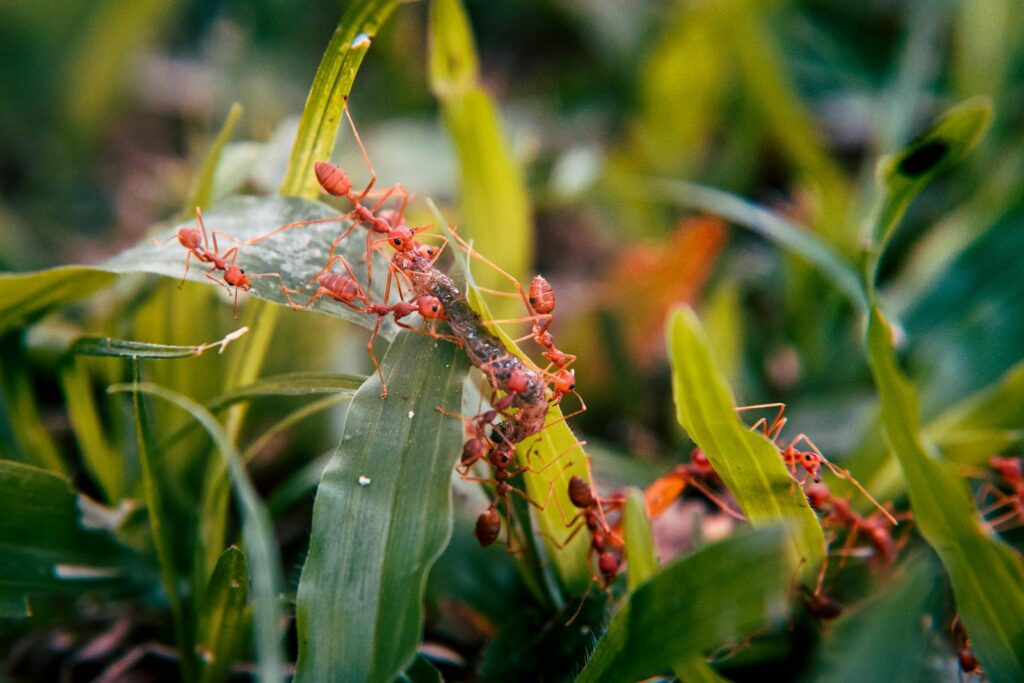
Deep within the soil beneath our feet or in carefully constructed mounds rising from forest floors, one of nature’s most fascinating phenomena unfolds daily. Ant colonies, comprising thousands to millions of individual insects, operate with such synchronized precision that scientists often describe them as “superorganisms.” Unlike a mere grouping of individuals, these colonies function as unified entities—almost as if directed by a single mind. This collective intelligence emerges not from centralized command but through complex interactions between seemingly simple components. As we explore the intricate world of ant colonies, we’ll discover how these tiny creatures, through chemical communication, division of labor, and evolutionary adaptations, create societies whose intelligence and efficiency far exceed the sum of their parts.
The Concept of a Superorganism
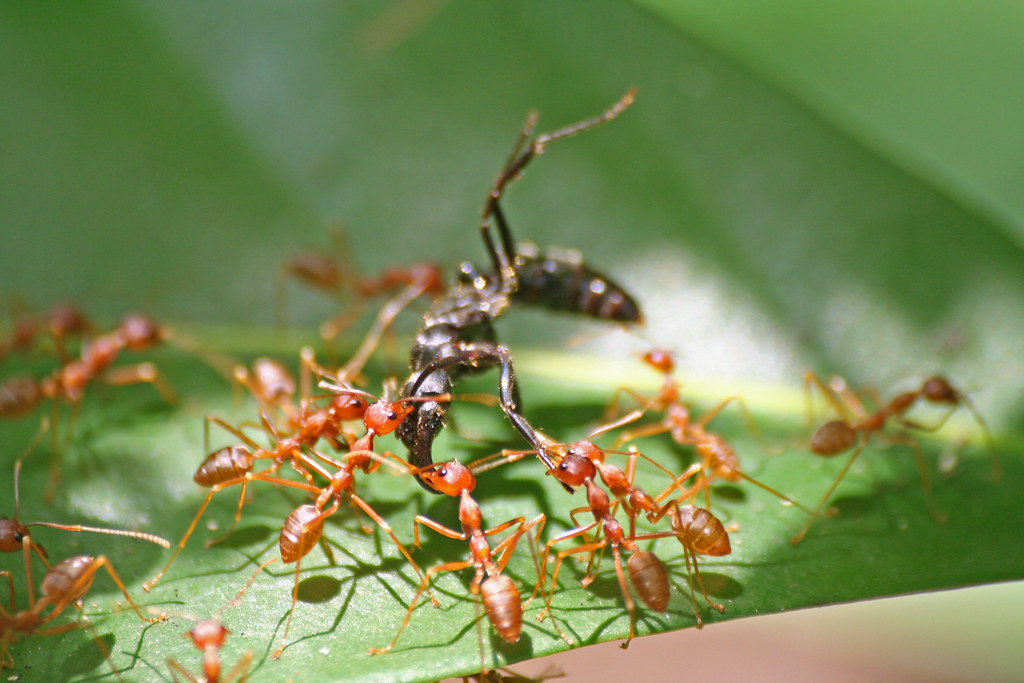
A superorganism represents a collection of organisms that function as a unified entity, exhibiting behaviors and adaptations that benefit the collective rather than individuals. In ant colonies, this concept reaches remarkable sophistication, with millions of individuals working together as effectively as cells in a single body. The term, popularized by scientists like E.O. Wilson, helps us understand how natural selection can operate at the colony level, shaping behaviors that might seem counterintuitive at the individual level. Consider how worker ants sacrifice their reproductive capacity entirely for the colony’s benefit—a behavior that makes sense only when we view the colony as the true evolutionary unit. This concept extends beyond ants to other social insects like bees and termites, though ants have evolved some of the most complex superorganism structures known to science.
Chemical Communication: The Colony’s Nervous System

The foundation of an ant colony’s collective intelligence lies in its sophisticated chemical communication system, primarily facilitated through pheromones. These chemical signals serve as the colony’s shared nervous system, allowing information to flow rapidly throughout the superorganism despite no centralized brain directing activities. Ants can produce dozens of different pheromones from various glands, each triggering specific behaviors in their nestmates. When foragers discover food, they lay down trail pheromones on their return journey, creating highways that other workers follow. Alarm pheromones trigger defensive responses when the colony faces threats, spreading faster than any verbal warning could. Perhaps most remarkably, these chemical signals allow for variable responses—the concentration of a pheromone often determines the intensity of the response, enabling sophisticated, gradient-based decision-making across thousands of individuals.
Division of Labor: Specialized Roles Within the Colony
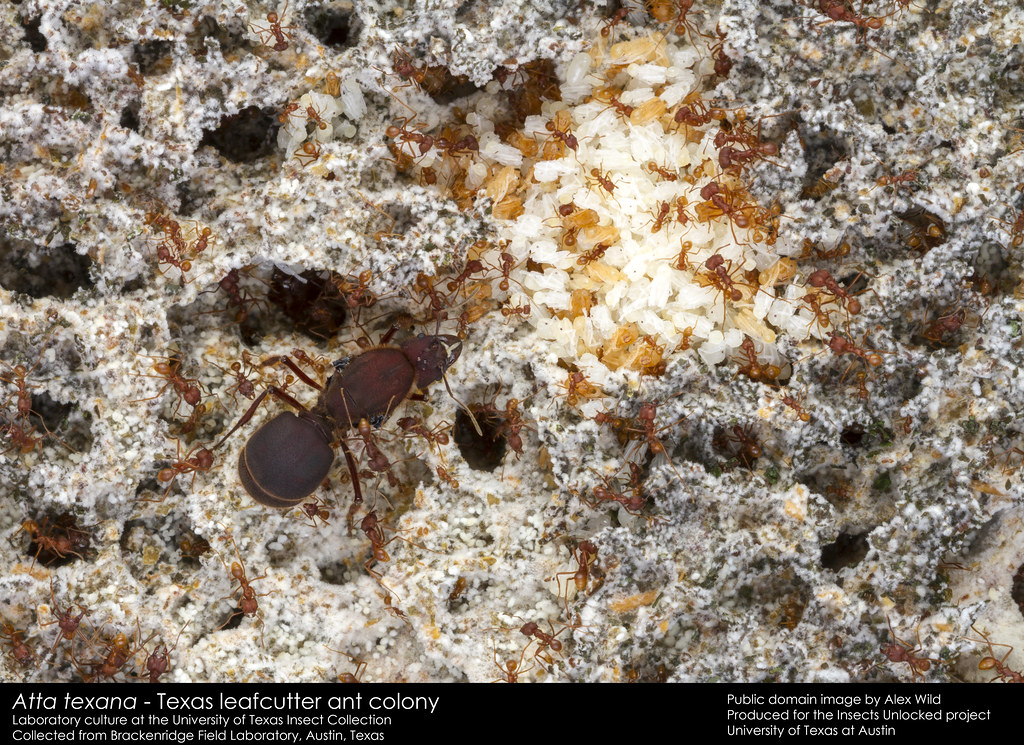
The efficiency of ant colonies stems largely from their highly organized division of labor, where individuals specialize in specific tasks based on factors including age, size, and genetic predisposition. Young workers typically remain in the nest caring for the brood (eggs, larvae, and pupae), gradually moving to nest maintenance, and eventually to the more dangerous tasks of foraging and defense as they age. In many species, physical polymorphism creates distinct castes—from tiny workers that tend to the queen and young, to medium-sized foragers, to large-headed soldiers with powerful mandibles for colony defense. This specialization extends to behavioral tendencies as well, with some workers showing greater responsiveness to certain stimuli than others, creating a balanced workforce that can address all colony needs simultaneously. The division of labor in ant colonies achieves efficiency levels that human organizations often strive to emulate, with minimal centralized control yet remarkable coordination.
Collective Decision-Making Without a Leader
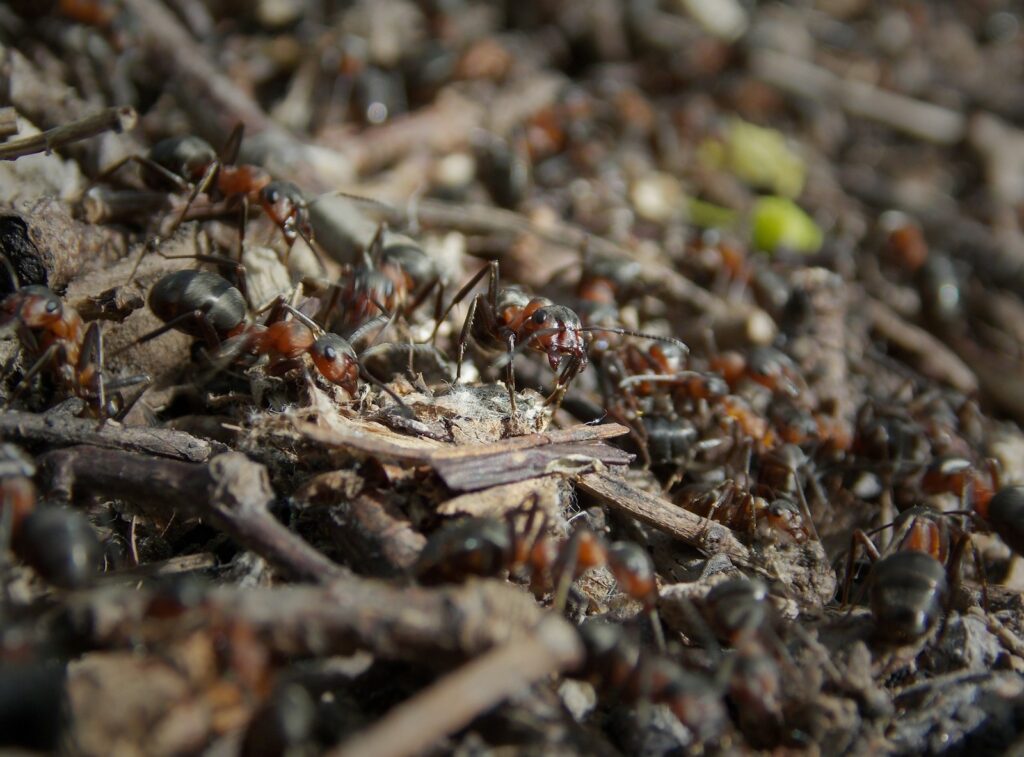
One of the most fascinating aspects of ant colonies is their ability to make complex decisions without any individual understanding the big picture or directing others. When scout ants discover potential new nest sites, for instance, they recruit others proportionally to the site’s quality through a process called quorum sensing. As more ants visit high-quality sites, positive feedback loops strengthen until the colony reaches consensus, often selecting the optimal location from multiple options. Similar democratic processes govern foraging decisions, with the colony effectively calculating costs and benefits across vast territories through simple interaction rules among workers. Experiments have shown that these distributed decision-making systems can solve complex optimization problems that would challenge sophisticated computer algorithms. By relying on the wisdom of the collective rather than individual brilliance, ant colonies achieve remarkable decision outcomes while maintaining resilience against the failure of any single component.
The Role of the Queen: Misunderstood Monarch
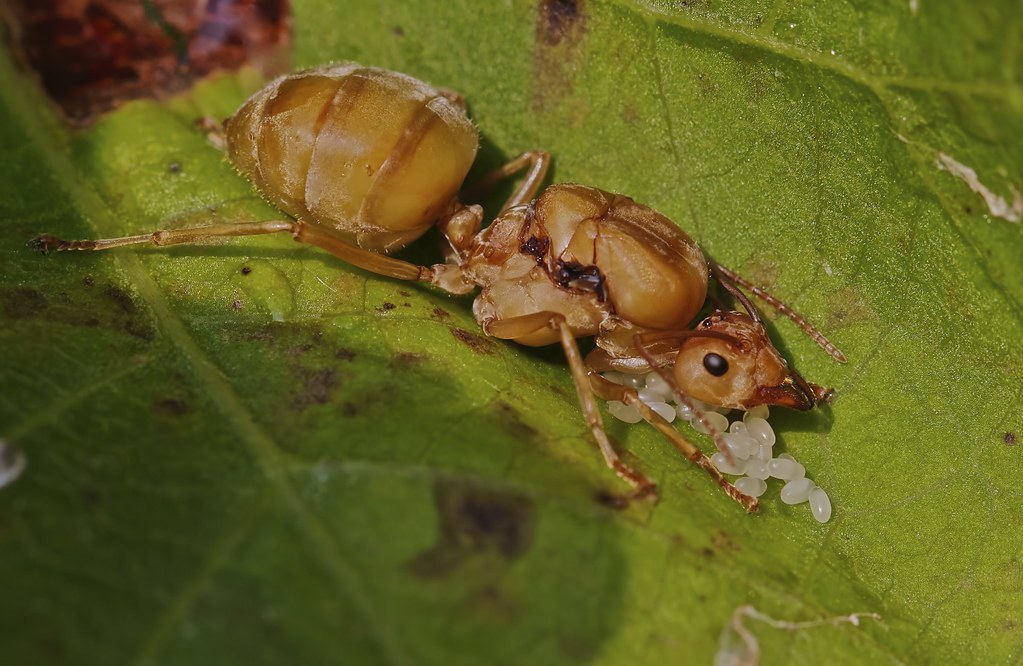
Despite common misconceptions, the queen ant does not rule or direct the colony’s activities as a monarch might govern a kingdom. Instead, her primary role is reproductive—laying eggs that develop into the various castes needed for colony function and growth. In most species, queens begin their lives with a nuptial flight where they mate with multiple males, storing enough sperm to potentially produce millions of offspring over lifespans that can exceed decades. After founding a colony, the queen’s existence becomes largely sedentary, attended by workers who feed her and care for her eggs while she focuses exclusively on reproduction. The queen does influence colony behavior through pheromones that regulate worker activity and development, but these are more akin to hormones in a body than commands from a ruler. This reproductive division of labor represents one of the most extreme examples of specialized roles in the natural world, with a single individual providing all the genetic input for an entire superorganism.
Nest Architecture: Engineering Marvels

Ant nests represent some of nature’s most sophisticated architectural achievements, with designs perfectly tailored to regulate temperature, humidity, air circulation, and defense without any centralized planning. Species like Formica construct mound nests that capture solar heat through precise orientation toward the sun, maintaining ideal brood development temperatures even as external conditions fluctuate. Leafcutter ants create vast underground chambers for their fungus gardens with complex ventilation systems that maintain perfect growing conditions. Army ants, having no permanent nests, create living structures from their own bodies, forming bridges, rafts, and temporary bivouacs that protect the queen and brood. The construction of these complex structures emerges from simple behavioral rules followed by individual workers responding to local conditions and the activities of their nestmates. Perhaps most impressively, colonies can rapidly repair damage to their structures through emergent coordination, with thousands of workers spontaneously organizing to address breaches without any individual understanding the overall architectural plan.
Foraging Strategies: Optimization at Scale

Ant colonies have evolved remarkably efficient foraging systems that maximize resource collection across their territories through decentralized coordination. Trail-laying species create dynamic networks that mathematically approximate optimal solutions to the traveling salesman problem—finding the shortest route connecting multiple points. The strength of pheromone trails adjusts based on food quality and quantity, effectively performing cost-benefit analyses across vast areas. When resources are depleted, negative feedback mechanisms weaken trails, redirecting foragers to more productive areas without any central coordination. Different species employ specialized strategies suited to their environments—desert ants like Cataglyphis use celestial navigation and path integration to forage in extreme heat where pheromones would quickly evaporate, while leafcutter ants maintain highways that can extend hundreds of feet from their nests to reliable vegetation sources. These collective foraging systems achieve efficiency levels that rival or exceed the most sophisticated human-designed logistics operations, demonstrating how complex, adaptive behaviors can emerge from simple interaction rules.
Defense Mechanisms: The Colony Immune System

Ant colonies have evolved sophisticated defense systems that function analogously to an immune system in a multicellular organism, protecting the superorganism from various threats. When pathogens infiltrate a colony, specialized behaviors activate to prevent spreading—infected individuals may isolate themselves or be removed by nestmates who detect chemical changes associated with disease. Many species produce antimicrobial secretions that they spread throughout the nest, creating a collective prophylactic treatment against fungi and bacteria. Physical threats trigger coordinated defensive responses, with alarm pheromones rapidly mobilizing soldiers to breach points while other workers evacuate brood or block entrances. Some species have evolved specialized castes with dramatically modified anatomy for colony defense—soldiers with reinforced head capsules in Pheidole species or the door-head ants (Cephalotes) whose heads perfectly plug nest entrances. These multi-layered defense systems demonstrate how natural selection has shaped colony-level adaptations that protect the superorganism as a unified entity rather than merely preserving individual ants.
Colony Memory and Learning

Though individual ants have limited memory capacity, ant colonies as collective entities demonstrate sophisticated learning and memory capabilities that emerge from their networked interactions. When environmental conditions change, colonies can adapt their behavior patterns through feedback mechanisms that effectively encode “memories” in the distribution and activities of workers. Research has shown that colonies exposed to repeated threats develop faster, more efficient responses over time, even as individual workers are replaced through natural turnover. This learning occurs through changes in the threshold sensitivity of workers to various stimuli or alterations in the colony’s physical structure in response to experience. Information about food sources, predators, and environmental conditions spreads through the colony network and persists beyond the lifespan of any individual ant. This distributed memory system creates a form of collective knowledge that allows colonies to adapt to their environments over time scales that extend well beyond individual experience—a fascinating example of intelligence emerging at the superorganism level.
Genetic Diversity as Collective Intelligence
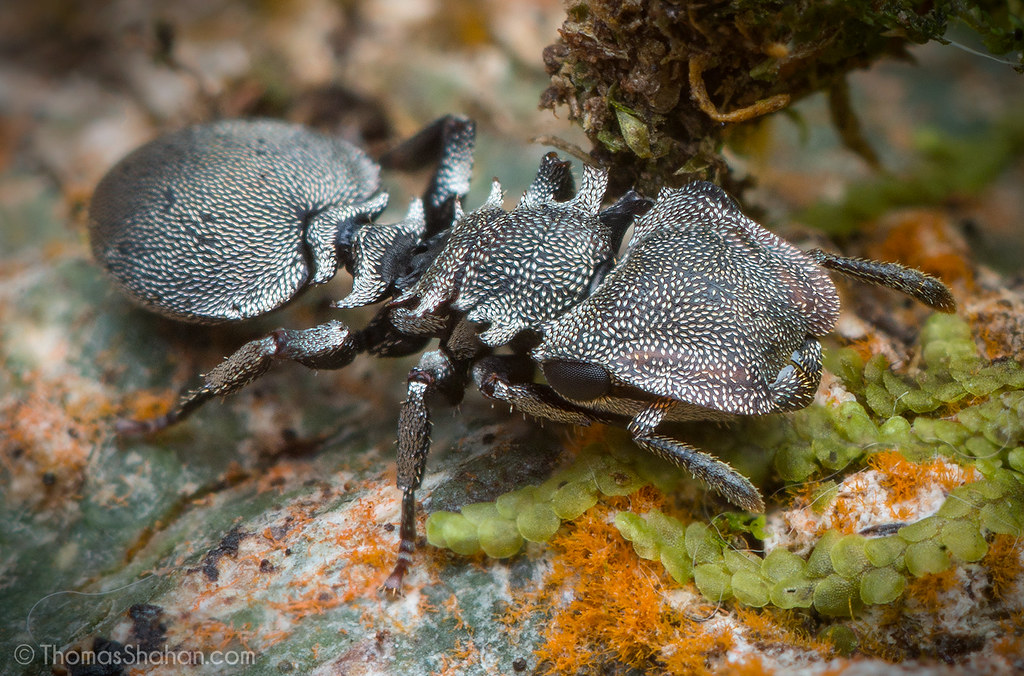
Many ant species have evolved reproductive strategies that maximize genetic diversity within colonies, directly enhancing their collective problem-solving abilities and resilience. Queens typically mate with multiple males during their nuptial flights, storing sperm from different partners to produce worker offspring with diverse genetic makeups. This reproductive strategy, called polyandry, creates colonies composed of multiple patrilines (groups of sisters sharing the same father but with the same mother). Research has demonstrated that this genetic diversity translates directly to functional diversity, with different patrilines showing varying thresholds for engaging in specific tasks or responding to particular stimuli. When colonies face new challenges, this built-in diversity ensures that at least some workers will have appropriate response thresholds, allowing the superorganism to adapt more effectively than a genetically uniform workforce could. The strategic maintenance of genetic diversity represents a fascinating example of how natural selection has shaped colony-level adaptations that enhance collective intelligence.
Swarm Intelligence: Emergent Problem-Solving

The collective behavior of ant colonies has become one of the most influential models for understanding swarm intelligence—the emergence of sophisticated problem-solving capabilities from interactions among relatively simple agents. Computer scientists have developed “ant colony optimization” algorithms based on how ants find optimal paths through pheromone communication, creating powerful tools for solving complex problems in routing, scheduling, and network design. When army ants need to cross gaps, they construct living bridges using their bodies, dynamically adjusting the number of ants in the structure to balance the trade-off between bridge stability and maintaining foraging force. Perhaps most impressively, experiments have shown that ant colonies can solve complex resource allocation problems near-optimally through distributed processes without any individual understanding the overall challenge. These emergent problem-solving capabilities arise not from exceptional individual cognitive abilities but from the interaction networks that connect colony members—demonstrating how complex, adaptive intelligence can manifest at the group level from surprisingly simple components.
Superorganism Evolution: The Extended Phenotype
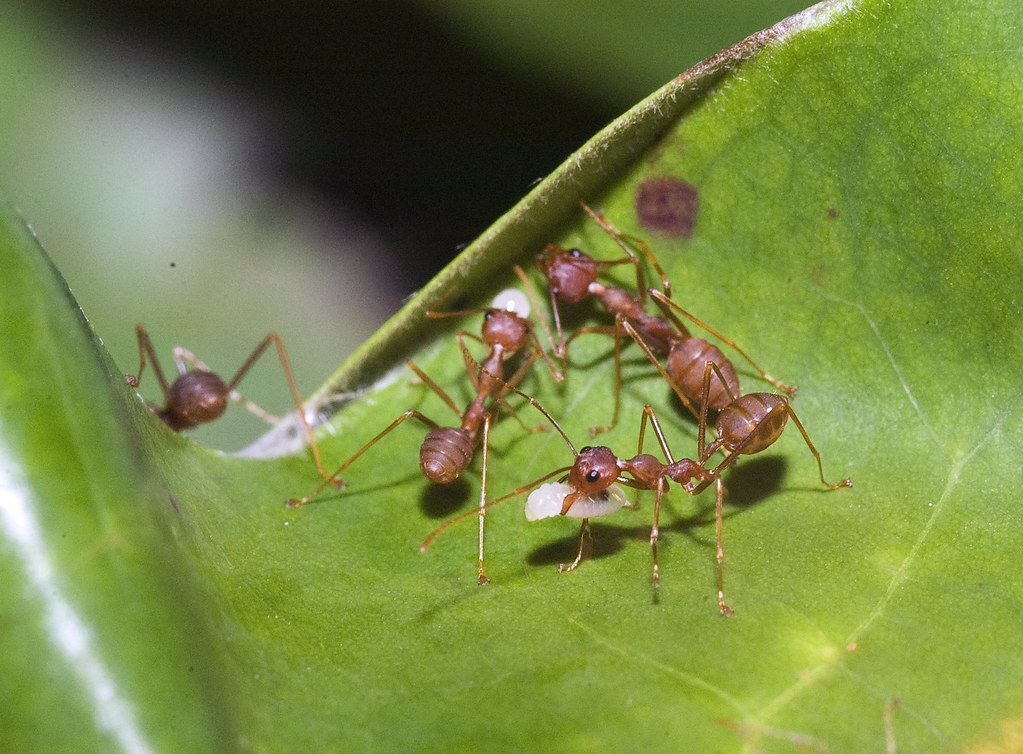
The evolution of ant colonies as superorganisms represents one of the most successful evolutionary innovations in Earth’s history, with ants dominating terrestrial ecosystems for over 100 million years. Biologist Richard Dawkins’ concept of the “extended phenotype” helps us understand how selection has shaped colony-level traits like nest architecture, foraging systems, and collective defense as extensions of the ants’ genetic information. This evolutionary perspective explains why workers sacrifice their individual reproduction—they share more genes with their sisters than they would with their own offspring (due to haplodiploid sex determination), making their inclusive fitness higher when helping raise siblings. The ecological dominance of ants stems directly from these superorganism adaptations, allowing colonies to exploit resources and environments inaccessible to individual insects. From the fungus-farming adaptations of leafcutter ants to the living architecture of weaver ants, the extended phenotypes of ant colonies showcase how evolution can operate at multiple levels simultaneously, creating entities whose adaptive complexity far exceeds what individual organisms could achieve.
Lessons from the Superorganism
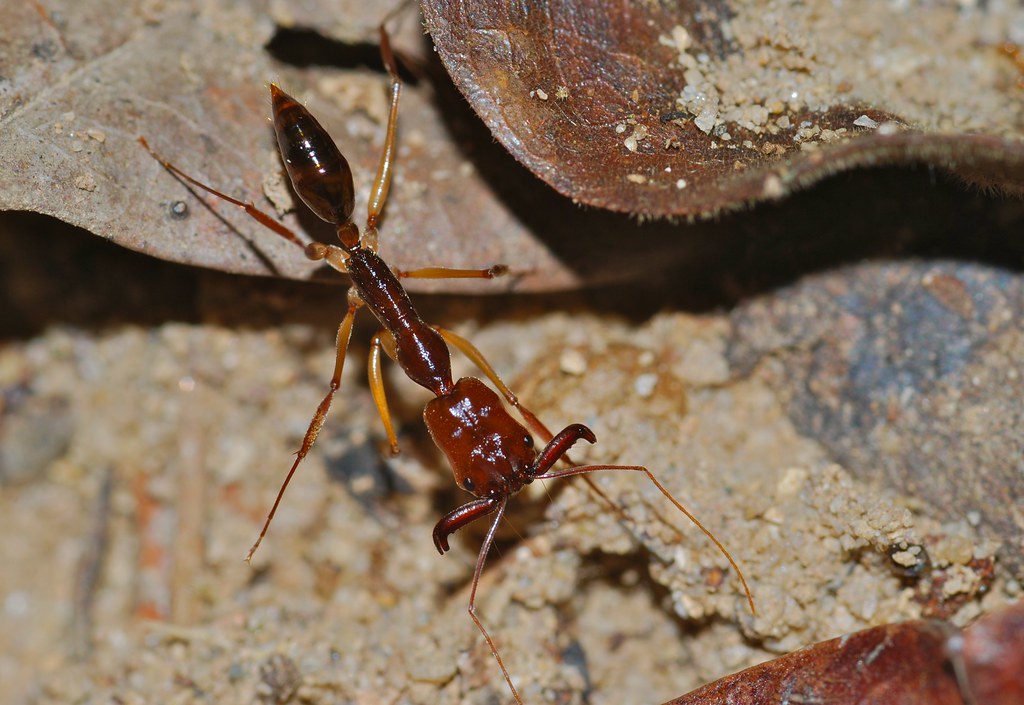
The study of ant colonies as superorganisms offers profound insights for human systems ranging from organizational management to artificial intelligence design. Their decentralized decision-making demonstrates how effective coordination can emerge without hierarchical control—a lesson increasingly relevant as human organizations seek more adaptive, resilient structures. Engineers developing swarm robotics draw direct inspiration from how ant colonies solve complex problems through simple interaction rules rather than sophisticated individual units. The way colonies balance exploitation of known resources with exploration for new opportunities provides models for optimization strategies across numerous domains. Perhaps most fundamentally, ant superorganisms challenge our understanding of what constitutes an individual in biological systems, blurring the line between organism and colony in ways that expand our conception of how intelligence and adaptation can manifest in nature. As climate change and other challenges demand more adaptive human systems, the 100-million-year evolutionary success story of ant superorganisms offers valuable templates for designing resilient collective systems from simple components following clear interaction rules.
Conclusion
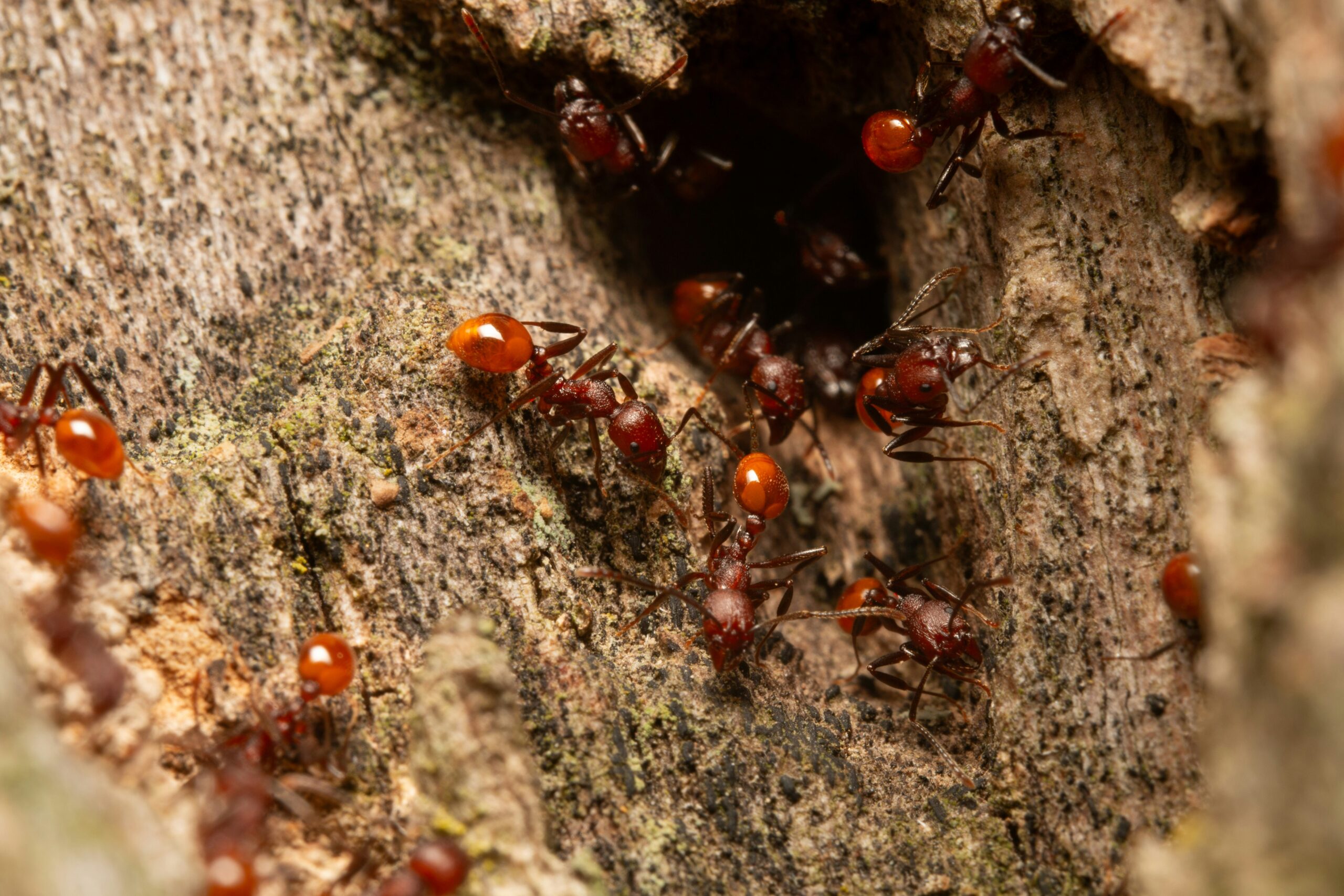
In the grand tapestry of evolution, ant colonies stand as compelling examples of how complexity can emerge from simplicity, and how collective intelligence can transcend individual limitations. Through chemical communication, distributed decision-making, and specialized roles, these superorganisms achieve feats that would be impossible for solitary insects. As we face increasingly complex challenges in human society, from climate adaptation to artificial intelligence development, the lessons of these ancient, successful societies may prove more relevant than ever. The ant colony reminds us that remarkable intelligence and adaptive capacity can emerge not just from centralized control or individual brilliance, but from the connections and interactions between simpler components—a powerful model for resilient, adaptable systems in an ever-changing world.

